Description
What is Outdoor Dipole Wifi Antenna?
The 5dBi Omnidirectional Antenna Range Outdoor Dipole Wifi Antenna CTRF-ANTENNA-FB-2450-22180-N is an FNR antenna fiberglass antenna radome with an IP67 waterproof grade outdoor antenna 2.4 GHz wifi antenna manufactured by C&T RF Antennas Inc.
The 5dBi Omnidirectional Antenna Range Dipole Wifi Antenna comes with an N-J standard N-male connector and a 22x180mm medium size for the wireless industry such as Wi-Fi, Zigbee, Bluetooth, etc.
The Omnidirectional Wi-Fi Fiberglass Antenna Dipole Wifi Antenna can be used in lots of industries such as IoT, M2M, wireless communications, etc.
This Dipole Wifi Antenna style also has the 433MHz frequency, 3G 4G LTE frequency, 5.8G frequency, or 868Mhz 915Mhz frequency.
C&T RF Antennas Inc supplies the 5dBi Omnidirectional Antenna Range Outdoor Dipole Wifi Antenna along with the 868Mhz antenna, 915Mhz antenna, wifi antenna, 3G antenna, 4G antenna, 5G antenna, 6G antenna, etc.
C&T RF Antennas Inc provides internal & external antennas with the antenna radio frequencies such as NFC, 169MHz, 230MHz, 315MHz, 433MHz, 868MHz, 915MHz, VHF&UHF, Lora, NB-IoT, ADS-B, GSM, GNSS, Wifi 2.4GHz, 5.8GHz, Cellular 2G 3G 4G LTE, GPS, 5G NR, etc.
C&T RF Antennas Inc. provides RF antennae with Omni & Directional antenna types such as Dipole Antennas, Whip Antennas, Marine Antennas, Router Antennas, MIMO Antennas, Combo Antennas, PCB Antennas, FPC Antennas, Spring Antennas, Magnetic Antennas, Sector Antennas, Yagi Antennas, and Accessories, etc, for IoT & M2M industries.
Please contact us for more details on the 5dBi Omnidirectional Antenna Range Outdoor Dipole Wifi Antenna such as Dipole Wifi Antenna datasheet, Dipole Wifi Antenna pricing, Dipole Wifi Antenna inventory, or the other dipole wifi antenna types, thank you.
5dBi Omnidirectional Antenna Range Outdoor Dipole Wifi Antenna Specifications
5dBi Omnidirectional Outdoor Dipole Wifi Antenna Electrical Specifications |
|
| RF Antenna Type | Omnidirectional Antenna |
| Model | CTRF-ANTENNA-FB-2450-22180-N |
| Frequency | 2400-2500MHz |
| Gain | 5dBi |
| VSWR | ≤1.5 |
| Impedance | 50 Ω |
| Polarization | Vertical |
| Horizontal Beam-width | 360 Degree |
| Connector | N-Male |
| Max Power | 50W |
| Radiation Pattern | Omnidirectional |
| Lightning Protection | DC Ground |
5dBi Omnidirectional Outdoor Dipole Wifi Antenna Mechanical Specifications |
|
| Dimension | 22x180mm |
| Operational Humidity | <65% |
| Radome Material | Fiberglass |
| Storage Temperature Range | -40~+85°C |
| Working Temperature Range | -40~+80°C |
| Color | White/Gray/Black |
| Antenna Form | Single Band |
| Mounting | Screw |
| RoHS | Compliant |
| Applications | ISM/SCADA/Utilities, IoT/M2M, Wireless LNA/Wi-Fi/Bluetooth/Zigbee/Sigfox, etc. |
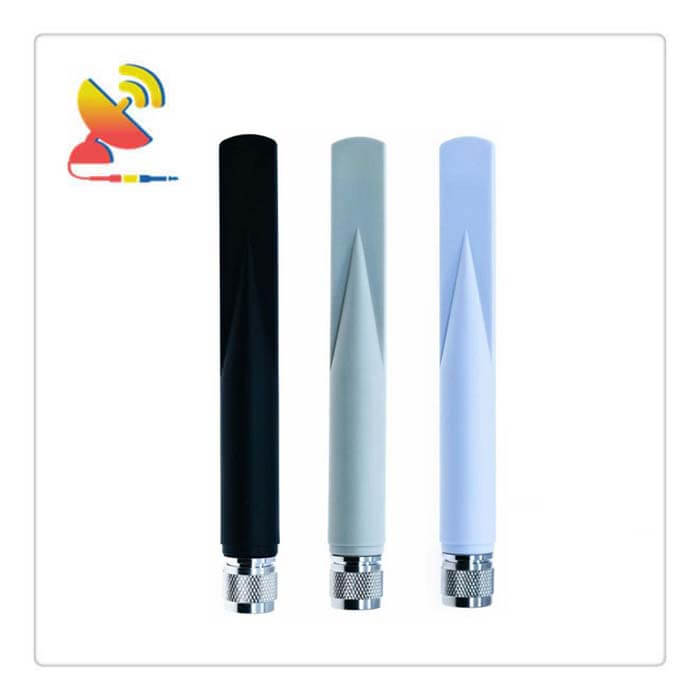
5dBi Omnidirectional Antenna Range Outdoor Dipole Wifi Antenna video
What is ZigBee technology?
ZigBee technology is a short-distance, low-complexity, low-power, low-speed, and low-cost two-way wireless communication technology.
It is mainly used for data transmission between various electronic devices with short distances, low power consumption, and low transmission rate, as well as typical applications with periodic data, intermittent data, and low response time data transmission.
ZigBee Technical Description
After the bees find the flowers, they will use special body language to inform their companions of the newly discovered food source location and other information. This body language is ZigZag dance, which is a simple way of conveying information between bees.
This means that Zigbee is the name of a new generation of wireless communication technology. Prior to this, ZigBee was also known as HomeRF Lite, RF-EasyLink, or fireFly radio technology, collectively known as ZigBee.
Simply put, ZigBee is a highly reliable wireless data transmission network, similar to CDMA and GSM networks. The ZigBee digital transmission module is similar to a mobile network base station. The communication distance ranges from the standard 75m to several hundred meters and several kilometers and supports unlimited expansion.
ZigBee is a wireless data transmission network platform composed of up to 65535 wireless data transmission modules. In the entire network, each ZigBee network data transmission module can communicate with each other, and the distance between each network node can be from Standard 75m unlimited expansion.
Different from the CDMA network or GSM network of mobile communication, the ZigBee network is mainly established for industrial field automation control data transmission. Therefore, it must be simple, easy to use, reliable in work, and low in price.
The mobile communication network is mainly established for voice communication, and the value of each base station is generally more than one million yuan, while each ZigBee base station is less than 1,000 yuan.
Each ZigBee network node can not only be used as a monitoring object, for example, the connected sensors can directly collect and monitor data, but also can automatically transfer data from other network nodes.
In addition, each ZigBee network node (FFD) can also be wirelessly connected to multiple isolated child nodes (RFD) that do not undertake the task of network information transfer within its own signal coverage.
ZigBee Technical characteristics
ZigBee is a wireless connection that can work on three frequency bands of 2.4GHz (popular in the world), 868MHz (popular in Europe), and 915 MHz (popular in the United States), with transmissions of up to 250kbit/s, 20kbit/s, and 40kbit/s respectively Speed, its transmission distance is in the range of 10-75m, but it can continue to increase. As wireless communication technology, ZigBee has the following characteristics:
(1) Low power consumption
Due to the low transmission rate of ZigBee, the transmission power is only 1mW, the sleep mode is adopted, and the power consumption is low, so ZigBee devices are very power-saving.
It is estimated that the ZigBee device can last up to 6 months to 2 years with only two AA batteries, which is beyond the reach of other wireless devices.
(2) Low-cost
The initial cost of the ZigBee module is around US$6, and it is estimated that it will soon drop to US$1.5-2.5, and the ZigBee protocol is royalty-free. Low cost is also a key factor for ZigBee.
(3) Short-time delay
The communication delay and the delay of activation from the dormant state are both very short. The typical search device delay is 30ms, the dormant activation delay is 15ms, and the active device channel access delay is 15ms.
Therefore, ZigBee technology is suitable for wireless control (such as industrial control occasions, etc.) applications with demanding delay requirements.
(4) Large network capacity
A star-shaped Zigbee network can accommodate up to 254
With one slave device and one master device, up to 100 ZigBee networks can exist simultaneously in an area, and the network composition is flexible.
(5) Reliable
A collision avoidance strategy is adopted, and a dedicated time slot is reserved for communication services that require a fixed bandwidth, avoiding the competition and collision of sending data.
The MAC layer adopts a fully confirmed data transmission mode, and each data packet sent must wait for the receiver’s confirmation information. If there is a problem during transmission, it can be retransmitted.
(6) Security
ZigBee provides a data packet integrity check function based on Cyclic Redundancy Check (CRC), supports authentication and authentication, and uses an AES-128 encryption algorithm. Each application can flexibly determine its security attributes.
ZigBee Applications
The ZigBee module is a wireless data terminal for the Internet of Things, which uses the ZigBee network to provide users with wireless data transmission functions.
The product adopts a high-performance industrial-grade ZigBee solution, provides SMT and DIP interfaces, and can be directly connected to TTL interface devices to realize data transparent transmission function;
Low-power design, the lowest power consumption is less than 1mA;
Provides 6-channel I/O, which can be realized as digital input and output, pulse output;
Among them, there are 3 I/Os that can also realize functions such as analog quantity acquisition and pulse counting.
This product has been widely used in the M2M industry in the Internet of Things industry chains, such as smart grid, smart transportation, smart home, finance, mobile POS terminals, supply chain automation, industrial automation, smart buildings, fire protection, public safety, environmental protection, meteorology, Digital medical treatment, remote sensing survey, agriculture, forestry, water affairs, coal mine, petrochemical, and other fields.
ZigBee Application Design
1. Use high-performance industrial-grade ZigBee chip
2. Low-power design supports multi-level sleep, and wake-up modes minimize power consumption
3. Power input (DC 2.0~3.6V)
Stable and reliable
1. WDT watchdog design to ensure system stability
2. Provide a TTL serial interface, and SPI interface.
3. Antenna interface lightning protection (optional)
Standard easy to use
1. Adopt 2.0 SMA and DIP interface, which is especially suitable for the application requirements of different users.
2. Provide a TTL interface that can be directly connected to TTL serial devices of the same voltage
3. Intelligent data module, it can enter the data transmission state after power on
4. Easy to use, flexible, multiple working mode options
5. Convenient system configuration and maintenance interface
6. Support serial port software upgrade and remote maintenance
ZigBee Powerful
1. Support ZigBee wireless short-distance data transmission function
2. With relay routing and terminal equipment functions
3. Support point-to-point, point-to-multipoint, peer-to-peer, and Mesh network
4. Large network capacity: 65535 nodes
5. Flexible node types: central nodes, routing nodes, and terminal nodes can be set arbitrarily;
6. Flexible transmission mode: broadcast transmission or destination address transmission mode is optional
7. Large communication distance
8. Provide 6 channels of I/O, which can realize 6 channels of digital input and output; compatible with 6 channels of pulse output, 3 channels of analog input, 3 channels of pulse counting function
ZigBee Alliance
The ZigBee Alliance is a fast-growing non-profit industry organization with members including internationally renowned semiconductor manufacturers, technology providers, technology integrators, and end-users.
The alliance has formulated a network application specification based on IEEE802.15.4 with high reliability, high-cost performance, and low power consumption.
The main goal of the ZigBee Alliance is to provide consumers with more flexible and easier-to-use electronic products by adding wireless network functions.
ZigBee technology can be integrated into various electronic products, and its application scope spans the global civil, commercial, public utility, and industrial markets.
This allows alliance members to use ZigBee, a standardized wireless network platform, to design various products that are simple, reliable, cheap, and power-saving.
The focus of the ZigBee Alliance is to formulate network, security, and application software layers; provide coordination and interoperability test specifications for different products; promote the ZigBee brand around the world and gain market attention, and manage the development of technology.
ZigBee Standard-setting
As early as 2003, the IEEE organization began to formulate the IEEE802.15.4 standard and released it. In 2006, the standard was updated. The latest IEEE802.15.4g standard for smart grid applications and the IEEE802.15.4e standard for industrial control applications.
The IEEE802.15.4 series of standards belong to the physical layer and MAC layer standards.
Due to the influence of the IEEE organization in the wireless field and the promotion of famous chip manufacturers such as TI, ST, Ember, Freescale, and NXP, this standard has become a fact in the field of wireless sensors networks. Standards, chips conforming to this standard have been widely used in various industries.
The ZigBee Alliance formulated the ZigBee standard: the physical layer, MAC layer, and data link layer of IEEE802.15.4. The standard was released in May 2003.
The formulation of the ZigBee network layer, encryption layer, and application description layer has also made great progress. The V1.0 version has been released. Other application fields and related device descriptions will also be released.
Since ZigBee is not only synonymous with 802.15.4, and IEEE only deals with low-level MAC layer and physical layer protocols, the ZigBee Alliance has standardized its network layer protocols and APIs.
The full protocol is used for 4K bytes that can be directly connected to the basic node of a device at a time or 32K bytes as a coordinator of a Hub or router. Each coordinator can connect up to 255 nodes, and several coordinators can form a network, and there is no limit to the number of routing transmissions.
The ZigBee Alliance has also developed a security layer to ensure that this portable device will not accidentally leak its identification and that this long-distance transmission using the network will not be obtained by other nodes.
In August 2001, the ZigBee Alliance was established.
In 2004, ZigBee V1.0 was born. It is the first specification of ZigBee. But due to the hasty launch, there are some errors.
In 2006, ZigBee 2006 was launched, which is relatively complete;
At the end of 2007, ZigBee PRO was launched;
In March 2009, ZigBee RF4CE was launched, with greater flexibility and remote control capabilities;
Beginning in 2009, ZigBee adopted the IETF IPv6 6Lowpan standard as the standard for the new generation of Smart Energy (SEP 2.0) and is committed to forming a globally unified network that is easy to integrate with the Internet to achieve end-to-end network communication.
With the large-scale construction and application of smart grids in the United States and around the world, the technical standards for the perception layer of the Internet of Things will gradually transition from ZigBee technology to IPv6 6Lowpan standards.
Dipole Wifi Antenna Fiberglass Antenna Features
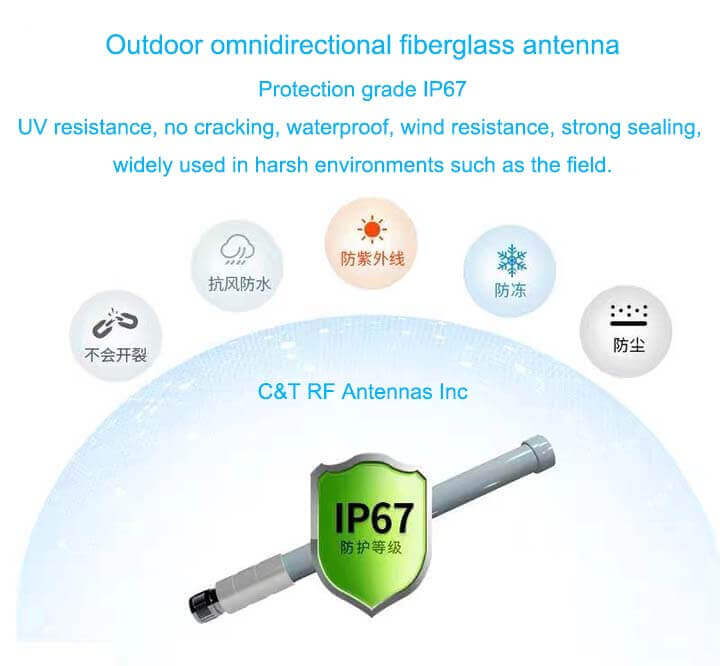
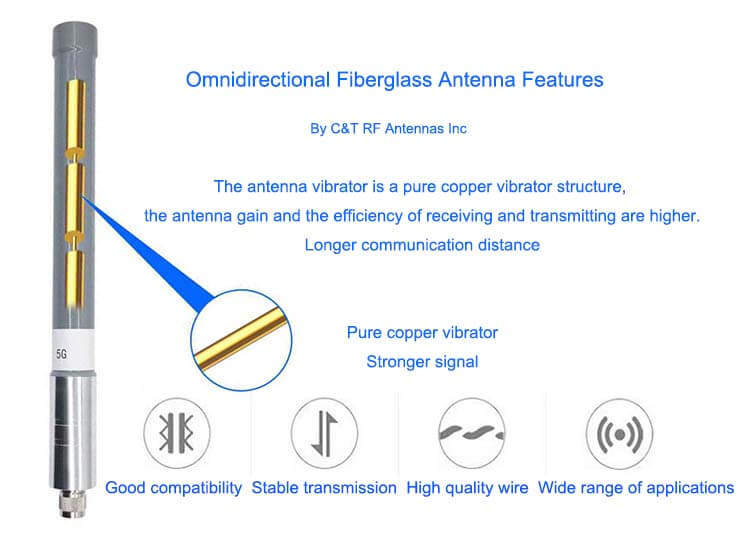
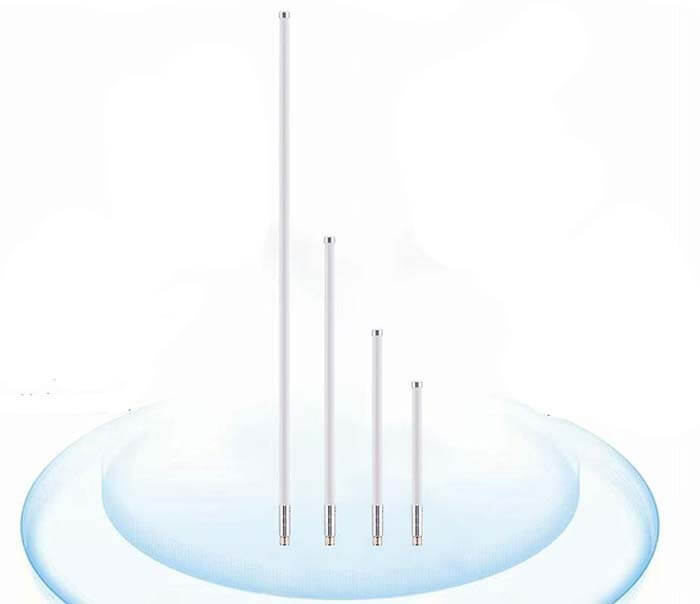
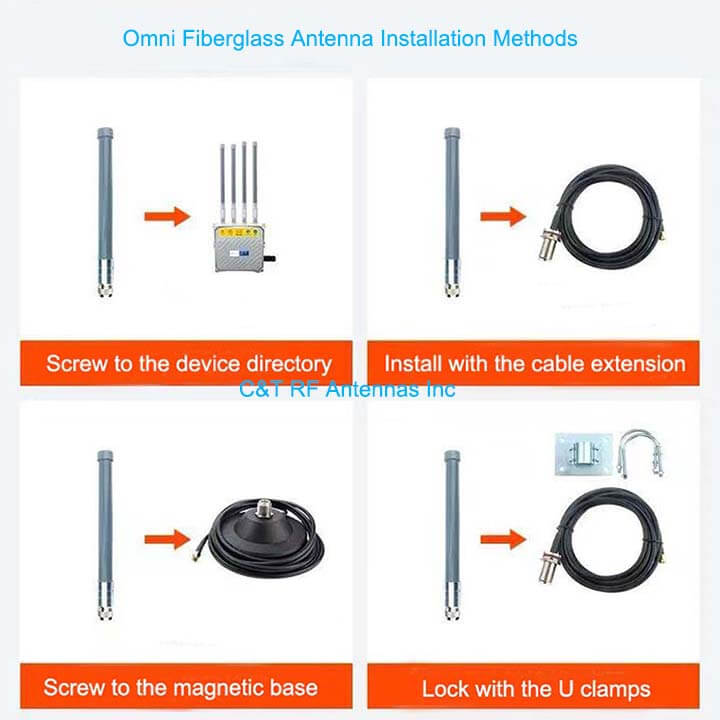
Dipole Wifi Antenna Fiberglass Antenna Installation Ways

Dipole Wifi Antenna Fiberglass Antenna Applications


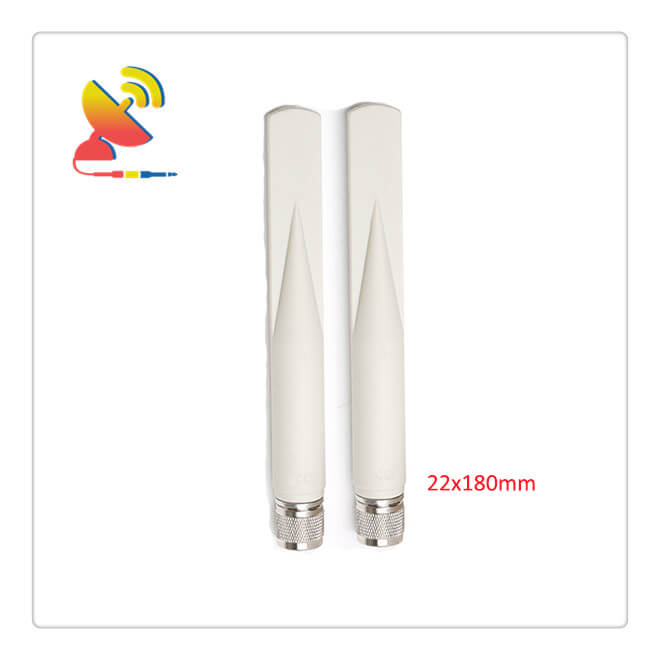
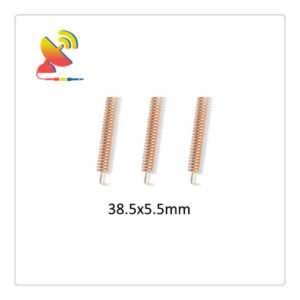
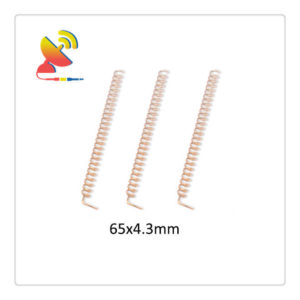
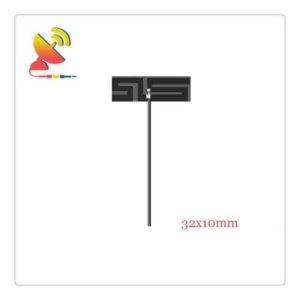
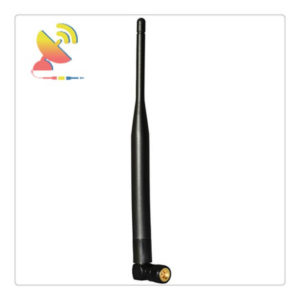
Reviews
There are no reviews yet.